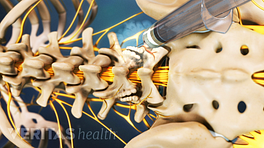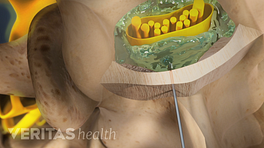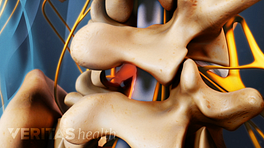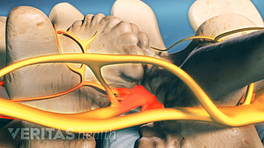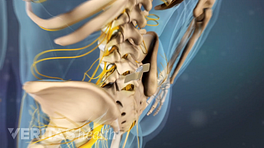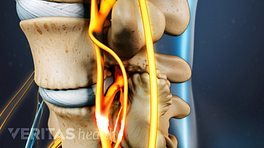There are three main non-surgical treatment options for synovial cysts in the lumbar spine:
- Observation and activity modifications
- General non-surgical treatments for pain relief
- Injections
In This Article:
- Synovial Cyst in the Lumbar Spine
- Synovial Cyst Symptoms and Diagnosis
- Treatment Options for Synovial Cysts
- Spine Surgery for Synovial Cysts
Observation and Activity Modification
If the synovial cyst is not creating a lot of dysfunction or pain in the patient’s daily life, no medical treatments may be necessary. Since the pain is usually caused by certain positions, changing positions is a reasonable way to deal with the pain as long as a patient can still function adequately.
General Non-Surgical Treatments
NSAIDs provide anti-inflammatory effects and help calm inflammation and pain in the back.
In conjunction with activity modification, patients will typically find pain relief with a range of possible nonsurgical remedies, including but not limited to:
- Application of ice and/or heat, which is especially effective for activity related pain and discomfort
- Pain medications, including non-steroidal anti-inflammatory medications (such as ibuprofen), acetaminophen, and/or prescription pain medications
- Rest, which is most effective for brief periods, such as a few hours or a day or two
Almost all treatment regimens will include some form of exercise and stretching routine. For aerobic exercise, it may be preferable for the patient to try stationary biking instead of walking, because in the seated position (leaning forward) the patient should be fairly comfortable.
Read more about non-surgical treatment options: Lumbar Spinal Stenosis Treatment and Low-Impact Aerobic Exercise
Injections for Synovial Cysts
There are two types of injections that can be helpful to alleviate the pain: facet injections or epidural injections.
- Epidural steroid injection. The more common injection technique is to inject around the cyst with steroid in the epidural space, known as an epidural injection. It does not reduce the cyst, but it can reduce the pain. Although the mechanism of the pain reduction is not well understood it is thought to be due to a reduction in inflammation. It works well about 50% of the time and not so well 50% of the time, and unfortunately, the pain relief tends to be temporary.
- Facet injection. The facet joint can be entered with a small needle, and occasionally the cyst can be drained by aspirating it through the joint. Afterwards, the joint is then injected with steroid to decrease inflammation.
Still, even though either injection is not all that reliable in the long run, it is reasonable to try since the only other alternative is surgery. Generally, no more than three injections within a year are recommended.
If injections don't provide sufficient pain relief or return to an acceptable level of function, then surgery may be considered.


